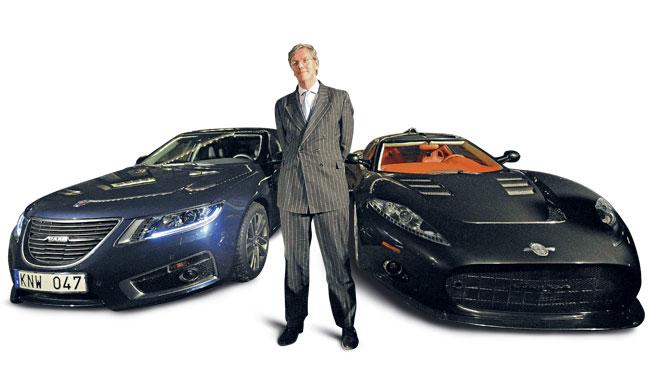A car is reborn
A TASMANIAN devotee helped save Saab from going under. Now the revived brand is exporting to Australia for the first time in two years.

VICTOR Muller is an urbane entrepreneur who collects cars and once paid more than $US3 million for a Ferrari.
More recently, he has become a collector of car companies. One is Spyker, a tiny Dutch sportscar specialist that he bought a decade ago and revived. The other is Saab, which he acquired from General Motors in February last year. The two share little except a heritage in aviation, yet their destinies are now entwined.
One year on, the smaller of Sweden’s two car companies is still alive against seemingly insurmountable odds. Its assembly lines started rolling again last year and 32,000 buyers signed on the dotted line. Soon, Australians will be counted against the total. The first Saabs to arrive here for two years are on their way to showrooms now – a consignment of 75 for 11 dealers around the country.
Steven Wade is an auditor who lives about as far away from Sweden as it’s possible to get: Tasmania. Yet he will be watching Saab’s rebirth here closely, and not just because he plans to buy a new one (it will be his ninth). His blog, Saabs United, became the unlikely rallying point for a global campaign to save the brand. Wade’s site has such good inside information that even Saab employees turned to it. On an average month it has 75,000 unique users.
Wade likes the fact that Saabs are different – or used to be, before GM got hold of the wheel. “Because they were born out of an aircraft company, they had this innovative way of finding solutions to problems,” he says.
Saab has a good chance of surviving under Muller, says Wade. It must persuade buyers of its unique appeal using cars that were fashioned under GM: the 9-5 premium sedan and 9-4X soft-roader, both due here within 12 months. This market used to be in the top 10 and there are still 41,000 on our roads. But it will be a long time before Saab sells 3000 cars a year here, as it did in its heyday.


